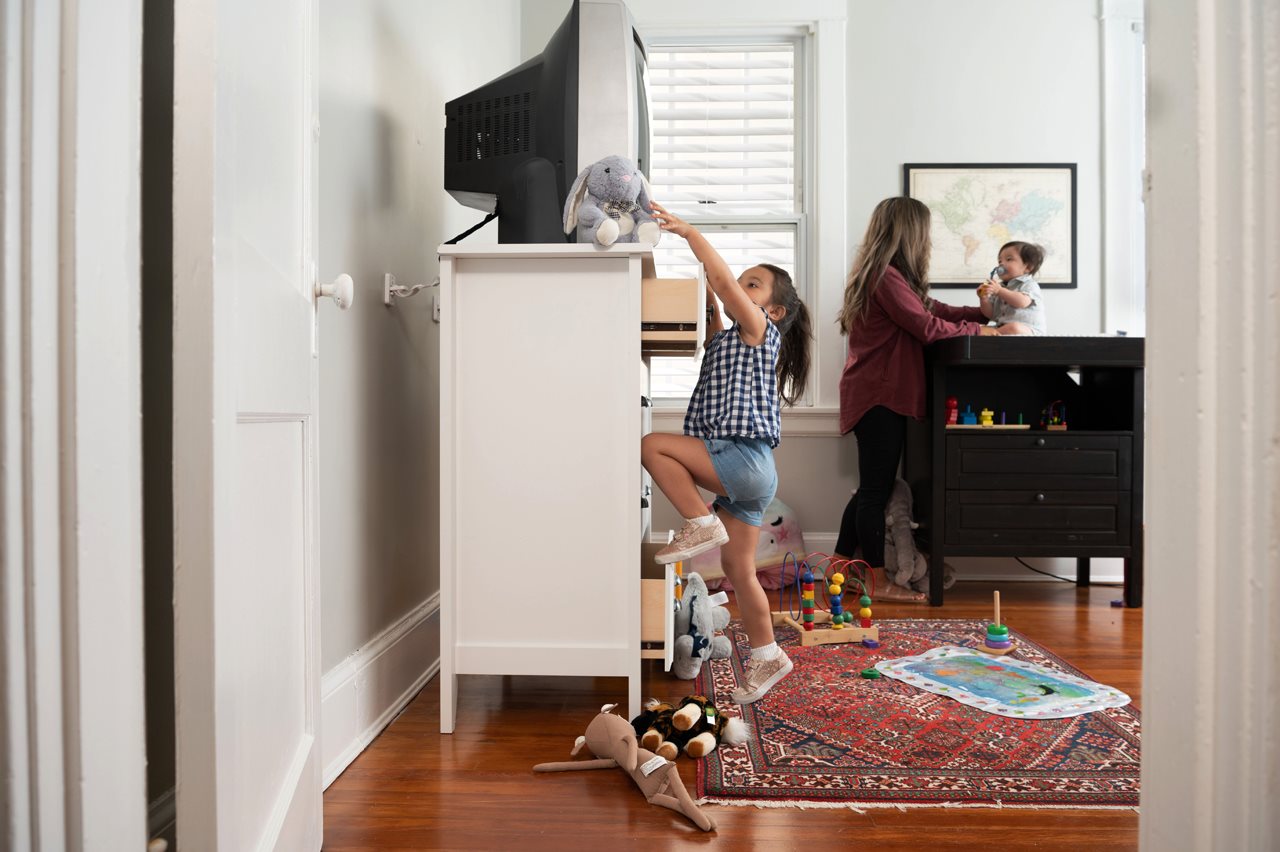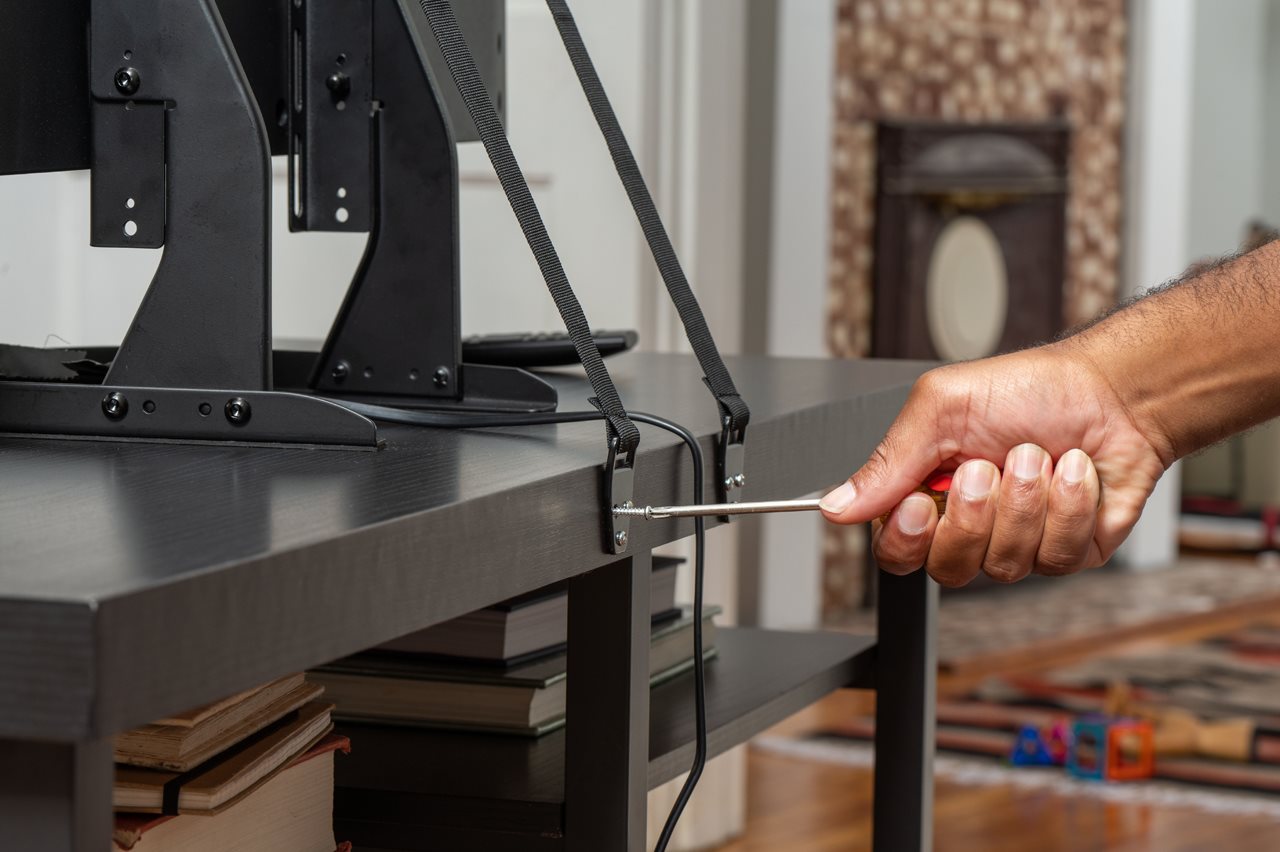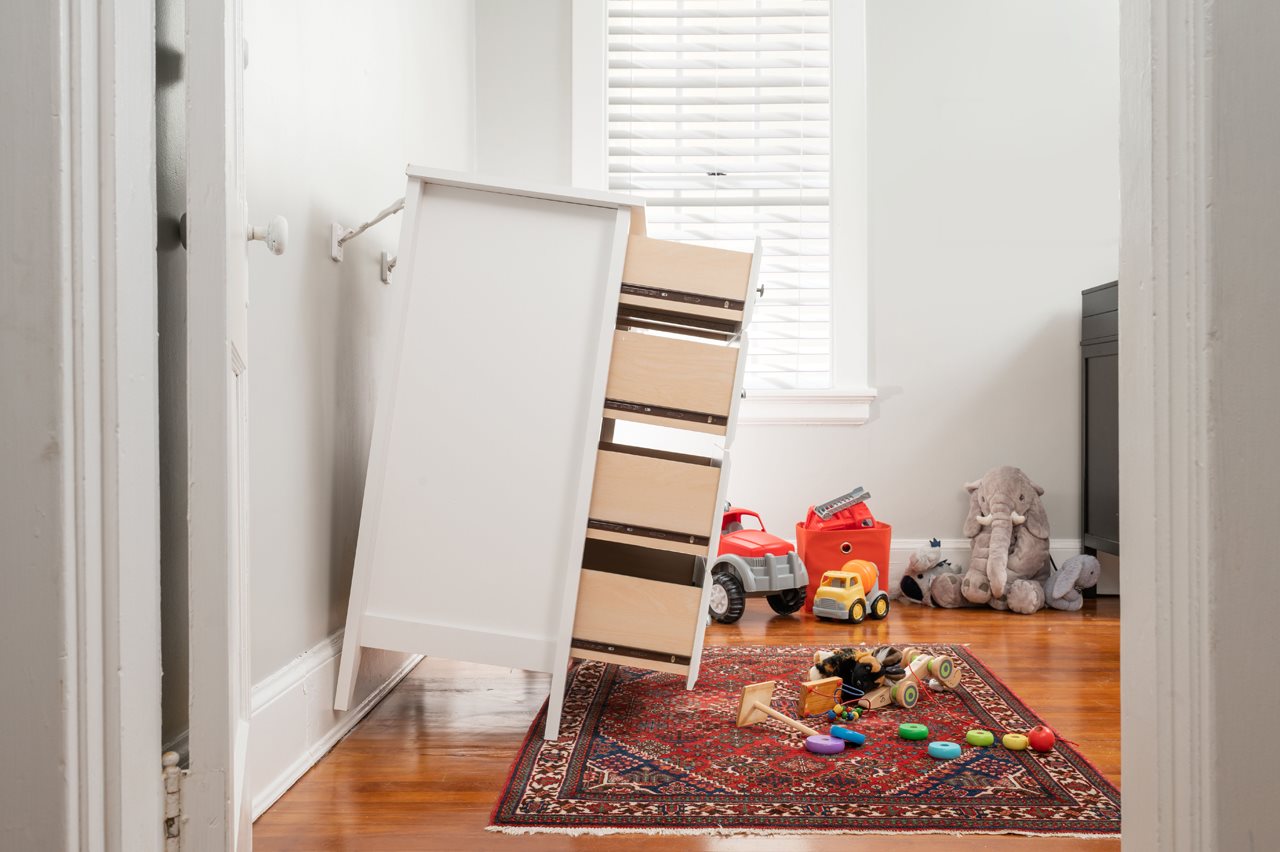2025-02-06T02:01:00
(BPT) – The Big Game is almost here and families all across America are getting their homes ready to watch and cheer along. The U.S. Consumer Product Safety Commission (CPSC) wants to remind everyone to anchor their televisions and furniture as they prepare their homes for a watch party.
CPSC’s Anchor It! campaign helps educate parents and caregivers about the dangers of falling TVs and furniture. These incidents can be deadly hidden home hazards. With more injuries and fatalities than most people imagine, CPSC and the Anchor It! campaign are providing simple and inexpensive steps to prevent furniture, TVs and appliances from tipping over.
As you prepare your home for the Big Game, here’s what you need to know about the importance of anchoring your furniture and televisions.
1. Tip-over Incidents by The Numbers
Every year, tip-over incidents land thousands of children in emergency rooms. According to a 2024 report from CPSC, children under the age of 18 suffered 44% of injuries from furniture, TV and appliance tip-over incidents — that’s a child going to the emergency department every 53 minutes.

In addition, the number of tip-over injuries impacting older adults (those aged 60+) has been on the rise, with emergency-room-treated injuries growing steadily over the past decade from 1,800 in 2013 to 4,300 in 2022.
CPSC works every day to reduce the number of tip-over injuries and fatalities — including enforcing the STURDY Act which strengthens safety standards for all clothing storage furniture like dressers. The measure took effect September 1, 2023, but consumers should still install an anchoring kit — especially if the dresser in your home was manufactured before the new standard went into effect.
2. Incident Disparities Among Certain Communities

Certain groups are impacted more heavily than others — particularly Black, non-Hispanic Americans. Among the tragic 137 reported child deaths from January 2013 through July 2023, Black non-Hispanic children accounted for 32% of those deaths while only accounting for about 14% of the U.S. population of children. And from 2020 to 2022, among the emergency room treated injuries to adults ages 18 years to 59 years, Black non-Hispanic adults accounted for 32% of those injuries despite making up only 13% of the U.S. population.
3. How to Anchor It!
Furniture, television and appliance tip-over incidents can happen to anyone but there are quick and easy steps that you can take to help avoid these situations. Anchoring kits usually cost less than $20 and take less than 20 minutes to install and it is easy to get started.

Begin by purchasing an anchoring kit at your local retailer or online. Make sure to buy enough anchoring kits to put on the furniture, televisions and appliances around your house. You will need a drill, screwdriver and stud finder to ensure that you’re installing the anchors on a sturdy surface.

Follow these simple steps to correctly and safely install your anchoring kit:
- Attach a bracket to the wall
- Move your furniture close to the wall
- Attach the other bracket/plate to your furniture or TV
- Connect the strap to both brackets
- Tighten the strap and make sure it’s secure

Finally, once your anchoring kit is installed, give it a check and tug on the straps to be confident everything is secure. You can find more detailed instructions on how to safely anchor your appliances at www.anchorit.gov/how-to-anchor/how-to-install-a-kit/.
4. 10 Years of Anchor It!
This year marks 10 years since the start of CPSC’s Anchor It! campaign and since then, the annual rate of tip-over injuries has been cut in half; however, there is still work to do. This summer, CPSC will be launching 10-year-anniversary-oriented activities to remind families of the importance of anchoring furniture in their homes. During your preparation for this year’s Big Game, make the right call and add Anchor It! to your watch party playbook.
About the U.S. CPSC
The U.S. Consumer Product Safety Commission (CPSC) is charged with protecting the public from unreasonable risk of injury or death associated with the use of thousands of types of consumer products. Deaths, injuries and property damage from consumer product-related incidents cost the nation more than $1 trillion annually. CPSC’s work to ensure the safety of consumer products has contributed to a decline in the rate of injuries associated with consumer products over the past 50 years.
Federal law prohibits any person from selling products subject to a Commission-ordered recall or a voluntary recall undertaken in consultation with the CPSC.
For lifesaving information:
- Visit CPSC.gov.
- Sign up to receive our email alerts.
- Follow CPSC on Facebook, Instagram @USCPSC and X @USCPSC.
- Report a dangerous product or a product-related injury on www.SaferProducts.gov.
- Call CPSC’s Hotline at 800-638-2772 (TTY 800-638-8270).
- Contact a media specialist.















